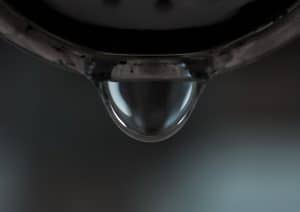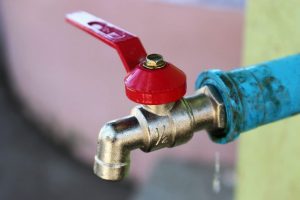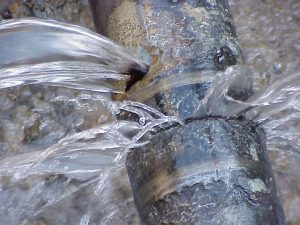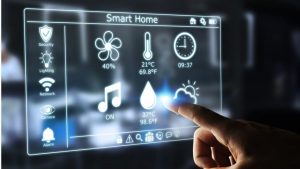Plugging the Leak on Rising Water Costs
Here in the US, we are fortunate to have access to clean water everyday—just turn on the tap and out pours some of the safest treated water in the world. But the water we take for granted every day—to brush our teeth, take showers, flush the toilet and for so many other reasons, is increasingly rising in cost.
Soaring Utility Bills
Water utility prices have risen more than 50% on average in 30 large US cities since 20101. According to the American Water Works Association, the median household bill for water and sewer service has increased by 75% from 2006 to 2016. Residents in Austin, Texas, have seen their rates rise more than 150% in the past seven years! 3

Clearly, a water crisis is looming.
Why are water costs rising? Part of the problem is the U.S. population is growing and we’re just simply running out of water. The bigger problem is the country’s decaying infrastructure.
Utilities are struggling to keep up with repairing and replacing corroded pipes, upgrading aging treatment facilities, and managing overflowing sewer systems. These necessary costs are being passed onto to the residents. As water and wastewater rates continue to increase, more households are trying to find ways to lower their bills.
What can be done to help ease the burden of escalating water costs? How can we ensure that every person has access to clean water in their homes?
In a word – conservation.
Disappearing Water
 The average family household uses 300-400 gallons per day, and according to the EPA, 10% of homes have water leaks averaging about 90 gallons or more a day of wasted water. A leaky faucet dripping one drop per second can waste 3,000 gallons per year. A shower dripping 10 drops per minute leaks 500 gallons per year. And an astounding 1 trillion gallons of wasted water is attributed to minor water leaks—enough water to service 11 million homes per year.4
The average family household uses 300-400 gallons per day, and according to the EPA, 10% of homes have water leaks averaging about 90 gallons or more a day of wasted water. A leaky faucet dripping one drop per second can waste 3,000 gallons per year. A shower dripping 10 drops per minute leaks 500 gallons per year. And an astounding 1 trillion gallons of wasted water is attributed to minor water leaks—enough water to service 11 million homes per year.4
Identifying and repairing leaks is one way to conserve and reduce household water usage.
Water Leak Detection
Water leaks in the home can be surprisingly difficult to detect. Leaks can occur at any time, and appear in pipes, fixtures, appliances, behind walls, and even underground mains can be the culprit. Some leaks are obvious, such as dripping  faucets and shower heads. But unfortunately, many leaks are not visible and can go undetected for years. When that happens, and water escapes unnoticed, such as toilet flapper valves or cracked water supply lines, thousands of gallons of water each year is wasted.
faucets and shower heads. But unfortunately, many leaks are not visible and can go undetected for years. When that happens, and water escapes unnoticed, such as toilet flapper valves or cracked water supply lines, thousands of gallons of water each year is wasted.
One quick way to check for water leaks is to turn off all water—inside and outside the home—record the water meter reading, wait 15 minutes and check again. If the meter recorded water use (making sure no one used water during this time), it’s likely there is a water leak somewhere.
If you suspect you have a leak, a comprehensive house check is in order. If you can’t detect the source of the leak, a plumber can help.
Sources of Possible Water Leaks
Repairing water leaks can be a simple DYI job or hire a plumber to make repairs. In some cases, local utilities may be able to offer guidance and resources to help mitigate problems.
Start by checking these areas where water leaks are likely to occur.
Toilets
The most common source of leaks in the home are toilets. There are several causes for toilet leaks, but flapper valves are the most common problem. And unfortunately, leaky toilet flappers often go undetected causing expensive water waste. A simple $12 replacement part and repair can save hundreds of dollars a year!
Faucets
 Leaky faucets are also quite common and usually easy to repair. When inspecting the home for faucet leaks, be sure to check all the water valves around the home, including: showers, bathtubs, water heaters, silcock spigots, washing machines, dishwashers, utility sinks, etc.
Leaky faucets are also quite common and usually easy to repair. When inspecting the home for faucet leaks, be sure to check all the water valves around the home, including: showers, bathtubs, water heaters, silcock spigots, washing machines, dishwashers, utility sinks, etc.
Appliances
Hoses connecting to washing machines and dishwashers are the weakest link in these appliances. A burst hose can spill hundreds or even thousands of gallons. Water damage to living spaces can be quite extensive too.
Pipe Connections
There are hundreds of joints, connectors, tees, and fixtures throughout the house. Each one these plumbing components is a possible source for failure and catastrophic leak.
 Water Supply Line
Water Supply Line
Leaks can occur in the water supply line, after the meter or from the water main in the street to the house. These types of leaks are usually buried underground and can be difficult to detect. Contact your water utility if you suspect water supply leaks.
Water heaters
Water heaters can fail due to corrosion, faulty installation, or inadequate maintenance. Common areas to check for leaks are temperature and pressure relief valves (T&P valves) failure, inlet and outlet connections, and even the tank itself.
Frozen Pipes
Freezing and expansion inside pipes can cause increased water pressure that leads to pipe failure. If this happens, be sure to shut off the service line and have a plumber inspect all pipes for possible damage.
Irrigation systems
Leaks in outdoor irrigation systems can be extensive, difficult to detect, and extremely wasteful and expensive. Be sure to monitor and check your system regularly.
More Steps to Take
 Consider installing automatic water shutoff valves and/or leak detection systems. Not only will these systems monitor flow in pipes and sense water leaks, automatic water shut-off valves can safeguard your home from costly water damage.
Consider installing automatic water shutoff valves and/or leak detection systems. Not only will these systems monitor flow in pipes and sense water leaks, automatic water shut-off valves can safeguard your home from costly water damage.
And with today’s smart home technology, whole house water shutoffs and leak detection systems can be controlled over the web or using a smartphone. Settings can easily be accessed to open and close valves, monitoring real-time water usage and more!
The New Reality
Most Americans get their water from one of approximately 52,000 municipal water systems in the country. About 15% of customers get their water from private resources. For decades, water utilities have delayed repairs to keep costs low creating homeowner expectations for inexpensive clean water. But time is running out for many of these aging water systems.
The EPA estimates the country needs to spend $655 billion over the next 20 years to upgrade water and sewer systems. Around 240,000 water mains break a year, contributing to $2.6 billion in lost drinking water.
Water delivered to our homes is increasingly become more valuable. Fortunately for now, however, the rising cost of tap water is still considerably less than bottled water.
Detecting, preventing and repairing costly water leaks is just one small step we can take to conserve one of our most precious resources – clean water.
